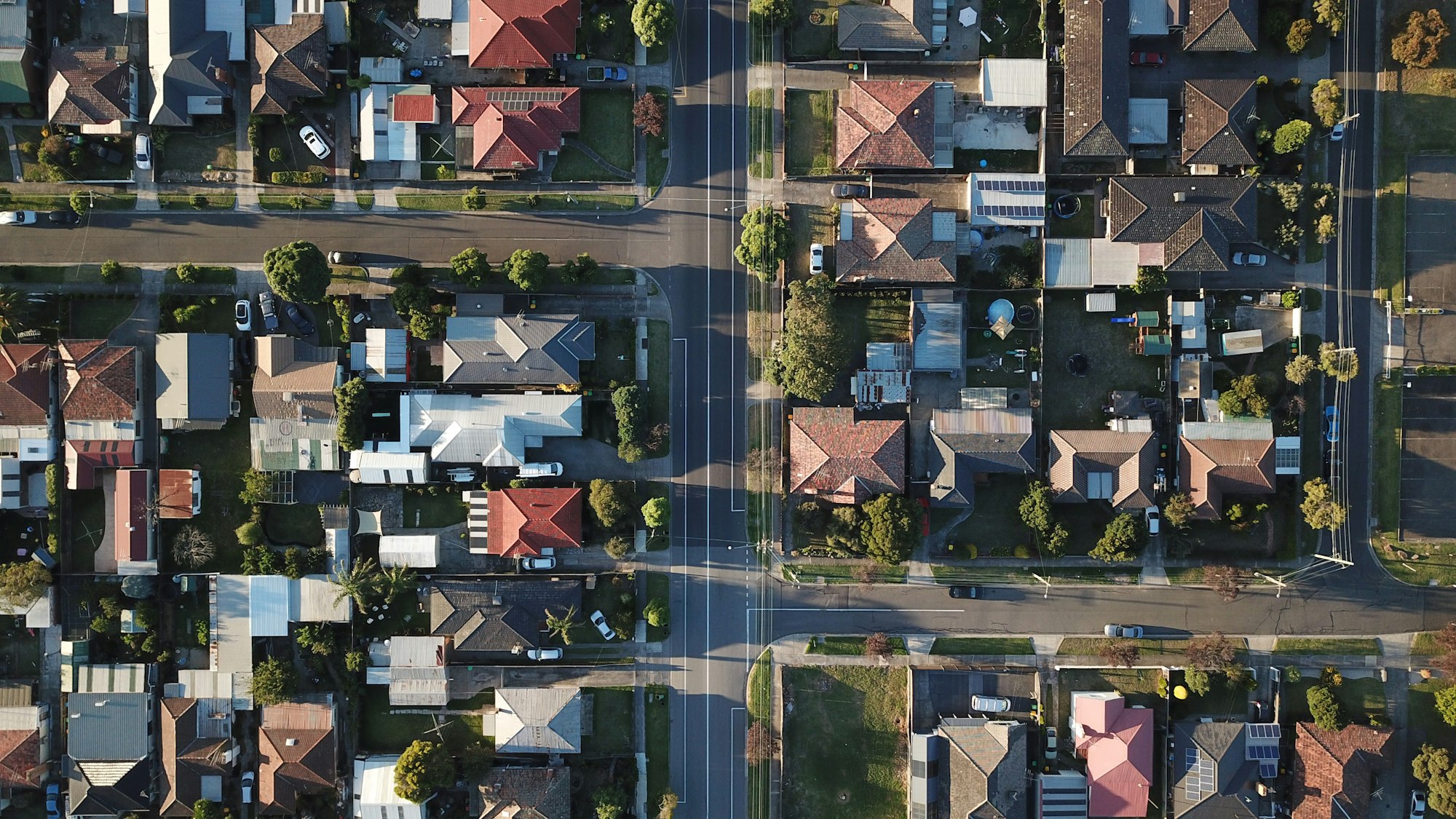Introduction: The Housing Market Conundrum
Imagine this: a modest, uninhabitable shack in Mount Druitt, Sydney, sells at auction for a staggering $1.18 million. No power, no water, yet 11 eager bidders vie for it. SOURCE
This isn't an isolated incident. Across Australia, housing prices have soared, making home ownership a distant dream for many. In the past five years alone, the median home value has surged by approximately $230,000, marking a 39.1% increase.
But why is this happening? Is it merely market dynamics, or is there more beneath the surface?
The truth is, the Australian government plays a significant role in this housing conundrum. Rather than implementing reforms to address affordability, policies have often favoured property investment, turning homes into wealth accumulation tools.
This approach, while beneficial for some, has exacerbated the affordability crisis, leaving many Australians struggling to enter the property market.
In this blog post, we'll look into:
- How housing serves as an economic lever for the government
- The impact of an ageing population on housing policies
- Taxation shortfalls and their influence on property markets
- The consequences for younger generations
- Potential solutions to create a more equitable housing landscape
By understanding these factors, we can better grasp the complexities of Australia's housing market and advocate for policies that promote affordability and inclusivity.
Housing as an Economic Lever
When we think about the Australian housing market, it's easy to focus solely on the supply and demand relationship. However, the reality is more complex. The government has long utilised housing as a tool to stimulate economic growth and manage fiscal challenges.
Historical Context: Housing as a Stimulus Tool
Historically, housing has been a reliable sector for economic stimulation. During downturns, policies encouraging home construction and ownership have been employed to boost employment and economic activity. For instance, post-World War II, Australia saw significant investment in housing to accommodate returning soldiers and a growing population.
Current Policies: Encouraging Investment
Today, several government policies continue to make housing an attractive investment:
- Negative Gearing: This allows investors to deduct losses on rental properties from their taxable income, effectively reducing their tax liability.
- Capital Gains Tax (CGT) Discount: Investors receive a 50% discount on capital gains tax for assets held longer than a year, making property investment more lucrative.
- First Home Owner Grants and Schemes: Initiatives like the First Home Owner Grant (FHOG) and First Home Buyer Schemes provide financial assistance to new buyers, increasing demand in the housing market.
These policies, while beneficial to investors and some home buyers, have also contributed to rising property prices, making it harder for many Australians to enter the market.
Impact: Housing as a Wealth Accumulation Tool
The combination of these policies has transformed housing into a primary means of wealth accumulation. For many Australians, property isn't just a place to live—it's a significant investment. This shift has led to increased competition in the housing market, driving up prices and exacerbating affordability issues.
The Ageing Population and Fiscal Pressures
Australia is getting older. By 2025, nearly one in five Australians—about 18%—will be aged 65 or over, and this proportion is projected to rise steadily in the coming decades.
The Financial Strain of an Ageing Population
An ageing population brings increased demand for healthcare, aged care services, and pensions. These services are costly, and funding them becomes more challenging as the proportion of working-age individuals shrinks relative to retirees.
The government faces a fiscal dilemma: how to fund the growing needs of an ageing population without overburdening the working-age population with taxes.
Home Equity as a Funding Mechanism
One approach has been to encourage older Australians to tap into the equity of their homes to fund their retirement and aged care needs. This can be done through downsizing, reverse mortgages, or home reversion schemes.
By accessing the wealth tied up in their homes, seniors can fund in-home care, medical expenses, or move into aged care facilities. This strategy reduces the immediate financial pressure on government resources.
Livable Housing Design Standards
To support ageing in place, the government introduced the Livable Housing Design Standard (LHDS) in October 2023. These standards mandate features in new homes that enhance accessibility, such as step-free entries, wider doorways, and reinforced bathroom walls for grab rails. The goal is to make homes safer and more adaptable for seniors, potentially delaying the need for costly residential aged care.
Taxation Shortfalls and Indirect Revenue
When we think about government revenue, we often consider income taxes, GST, and other direct taxes. But there's a less visible side to the story—how the government compensates for revenue shortfalls through indirect means, particularly by leveraging the housing market.
The Corporate Tax Gap
Multinational corporations operating in Australia have been under scrutiny for their tax practices. Despite generating significant revenues, some of these companies employ strategies to minimise their tax liabilities, such as profit shifting to low-tax jurisdictions. This practice reduces the taxable income reported in Australia, leading to substantial revenue losses for the government.
In response, the Australian Taxation Office (ATO) has implemented measures like the Multinational Anti-Avoidance Law (MAAL) to combat these practices. However, challenges persist, and the effectiveness of these measures is an ongoing concern.
Undercharging for Natural Resources
Australia is one of the world's leading exporters of liquefied natural gas (LNG). Yet, the revenue collected from these exports is surprisingly low. For instance, in 2017-18, Australian LNG companies had revenues totalling $29.7 billion but paid just $1.07 billion in royalties under the Petroleum Resource Rent Tax (PRRT).
In contrast, Qatar, another major LNG exporter, received approximately $26 billion in royalties from its LNG exports during the same period.
This disparity highlights how Australia may not be maximising its earnings from natural resource exports, leading to missed opportunities for public revenue.
Housing Market as an Indirect Revenue Source
To bridge these revenue gaps without increasing direct taxes, the government has turned to the housing market. Policies such as negative gearing and capital gains tax discounts incentivise property investment, driving up housing prices. As property values rise, so do the associated taxes and fees, providing a steady stream of revenue.
While this approach generates income for the government, it also contributes to housing unaffordability, particularly for first-time buyers. The reliance on the housing market as an indirect tax mechanism places additional financial burdens on individuals seeking home ownership.
The James Hardie Case Study: A Window into Corporate Strategy
In March 2025, James Hardie Industries, a prominent building materials company, announced its plan to acquire U.S.-based AZEK Company Inc. for approximately $8.75 billion. This move aimed to expand James Hardie's presence in the North American market, combining its expertise in fibre cement products with AZEK's portfolio of composite decking and outdoor living products.
Investor Concerns and Governance Issues
While the acquisition was positioned as a strategic growth opportunity, it sparked significant concern among investors, particularly in Australia. One major point of contention was the decision to proceed without seeking shareholder approval for issuing new shares to fund the deal. The Australian Securities Exchange (ASX) granted a waiver allowing this, leading to criticism over transparency and shareholder rights. Notably, while AZEK shareholders were given a vote on the transaction, James Hardie shareholders were not afforded the same opportunity.
This situation raised questions about corporate governance and the balance of power between company management and shareholders. The ASX's decision to grant the waiver without broader consultation led to calls for a review of its listing rules to ensure greater accountability and protection for investors.
Implications for Taxation and Profit Repatriation
Beyond governance concerns, the acquisition also highlighted issues related to taxation and profit repatriation. James Hardie, while operating extensively in Australia, is domiciled in Ireland and plans to shift its primary listing to the New York Stock Exchange (NYSE) following the acquisition. This move could potentially allow the company to benefit from more favourable tax regimes and regulatory environments, raising concerns about the erosion of Australia's tax base.
The situation underscores the challenges governments face in ensuring that multinational corporations contribute their fair share of taxes, especially when companies can leverage international structures to minimise tax obligations.
Articles discussing this merger in more detail:



In 2009 the Australian Taxation Office issued an amended assessment for $172 million plus interest and penalties. James Hardie successfully appealed the assessment SOURCE
The Double-Edged Sword of Housing Policies
Australia's housing policies, designed to promote home ownership and stimulate the economy, have had unintended consequences. While initiatives like negative gearing, capital gains tax (CGT) discounts, and first-home buyer grants aim to make housing more accessible, they've also contributed to rising property prices, making it harder for many Australians to enter the market.
Government Incentives: A Closer Look
Negative Gearing: This policy allows investors to deduct losses on rental properties from their taxable income. While it encourages investment in housing, it also increases demand, driving up prices and making it more challenging for first-time buyers to compete.
Capital Gains Tax Discount: Investors benefit from a 50% discount on capital gains tax for assets held longer than a year. This incentive promotes long-term investment but can also lead to speculative buying, further inflating property values.
First Home Owner Grants (FHOG): These grants provide financial assistance to first-time buyers. However, by boosting demand without a corresponding increase in supply, they can inadvertently push prices higher. The Reserve Bank of Australia has noted that such subsidies can have "pervasive" impacts on housing outcomes by increasing demand and prices.
Impact on the Housing Market
These policies, while well-intentioned, have created a market where property investment is highly attractive, leading to increased competition and higher prices. First-time buyers often find themselves priced out, while existing homeowners and investors see their wealth grow. This dynamic contributes to wealth inequality and makes housing less affordable for many Australians.
The Human Cost: Generational Inequity and Social Consequences
Australia's housing market has long been a cornerstone of wealth accumulation, particularly for the Baby Boomer generation. However, this dynamic has created significant challenges for younger Australians, who now face an uphill battle in achieving home ownership.
A Tale of Two Generations
For many Baby Boomers, property investment was a pathway to financial security. They benefited from policies like negative gearing and capital gains tax discounts, which made property investment more attractive. Over time, these incentives contributed to rising property values, bolstering the wealth of those who entered the market early.
In contrast, younger generations are grappling with a vastly different landscape. Skyrocketing property prices, stagnant wage growth, and increased living costs have made it increasingly difficult to save for a home deposit. For instance, in early 2024, the median house price in Australia was 8.6 times the median gross disposable household income, up from 4.9 times in 2002.
The Impact on Young Australians
The challenges faced by younger Australians are multifaceted:
- Delayed Home ownership: Many are postponing purchasing a home, leading to longer periods in the rental market and less financial stability.
- Increased Debt: Those who do manage to buy often take on substantial debt, making them more vulnerable to economic downturns.
- Mental Health Struggles: The stress of housing insecurity can lead to anxiety and other mental health issues.
Broader Social Implications
The housing affordability crisis doesn't just affect individuals—it has wider societal consequences:
- Economic Inequality: The wealth gap between property owners and non-owners continues to widen.
- Reduced Social Mobility: As home ownership becomes less attainable, it becomes harder for individuals to improve their economic standing.
- Strain on Public Services: Increased demand for rental assistance and social housing places additional pressure on government resources.
Building the Solution: Government Initiatives and the Path Forward
Despite the challenges facing Australia's housing market, there are concerted efforts underway to address affordability and accessibility. The government has launched several initiatives aimed at increasing the supply of social and affordable housing, streamlining planning processes, and supporting first-time buyers.
Key Government Initiatives
Housing Australia Future Fund (HAFF): Established as a $10 billion investment fund, the HAFF aims to deliver 30,000 new social and affordable homes over its first five years. This includes 20,000 social housing units and 10,000 affordable homes for frontline workers like nurses and police officers.
National Housing Accord: This agreement between the federal government, states, and territories sets an ambitious target to build 1.2 million well-located homes over five years from July 2024. The Accord includes a $350 million commitment from the Commonwealth to support the delivery of 10,000 affordable homes, matched by states and territories.
Social Housing Accelerator: A $2 billion initiative aimed at delivering around 4,000 new and refurbished social homes across Australia. The funds were provided to states and territories in June 2023 to commence building immediately.
National Agreement on Social Housing and Homelessness (NASHH): Effective from July 2024, this agreement provides $9.3 billion over five years to support social housing and homelessness services, offering flexibility to states and territories to address local needs.
Supporting First-Time Buyers
Help to Buy Scheme: This initiative assists 40,000 low- to middle-income households in purchasing homes by providing government equity contributions, reducing the deposit required and eliminating the need for mortgage insurance.
Home Guarantee Scheme: Since its launch in January 2020, this scheme has supported over 168,000 eligible home buyers to purchase their own homes by guaranteeing part of their home loan, enabling them to buy with as little as a 5% deposit.
Local Government Efforts
Local councils are also playing a role in addressing the housing crisis. For example, the Noosa Council in Queensland has waived infrastructure charges for secondary dwellings, such as granny flats, to encourage homeowners to build and rent out these units. This policy aims to increase the availability of affordable rentals for key workers and small households.
Conclusion: Rethinking Housing as a Public Good
Australia's housing landscape has long been influenced by policies that treat property as a wealth-building tool. While this approach has benefited many, especially older generations, it has also contributed to significant affordability challenges for younger Australians and those on lower incomes.
The government's reliance on housing as an economic lever—through incentives like negative gearing, capital gains tax discounts, and first-home buyer grants—has inadvertently fuelled property price inflation. At the same time, insufficient taxation of multinational corporations and undercharging for natural resource exports have led to revenue shortfalls, prompting the government to seek alternative funding sources, often placing additional pressure on the housing market.
Recent initiatives, such as the Housing Australia Future Fund and the National Housing Accord, signal a shift towards addressing these issues by increasing the supply of social and affordable housing.
However, to create a more equitable housing system, a fundamental rethinking is required—one that views housing not merely as an investment vehicle but as a basic human right and a cornerstone of community well-being.
By adopting policies that prioritise housing affordability and accessibility, and by ensuring that all sectors contribute their fair share to public revenue, Australia can work towards a more balanced and inclusive housing market that serves the needs of all its citizens.
Frequently Asked Questions (FAQ)
1. Why does the Australian government use housing as an economic lever?
Housing is a significant driver of Australia's economy. By implementing policies like negative gearing and capital gains tax discounts, the government encourages investment in property, which stimulates economic activity and generates revenue through taxes and fees.
2. How do these housing policies affect affordability?
While these policies boost investment, they also increase demand for housing, leading to higher property prices. This makes it more challenging for first-time buyers to enter the market, exacerbating affordability issues.
3. What is the impact of multinational corporations on Australia's tax revenue?
Some multinational companies employ strategies to minimise their tax liabilities in Australia, such as profit shifting to low-tax jurisdictions. This reduces the tax revenue available to the government, potentially leading to greater reliance on indirect taxes like those from the housing market.
4. How does the ageing population influence housing policy?
As Australia's population ages, there is increased demand for healthcare and aged care services. The government encourages older Australians to tap into their home equity to fund these needs, reducing the financial burden on public resources.
5. What initiatives are in place to address housing affordability?
The government has introduced several programs, such as the Housing Australia Future Fund and the National Housing Accord, aiming to increase the supply of social and affordable housing. Additionally, schemes like Help to Buy assist first-time buyers in entering the market.
6. How effective are first-home buyer grants in improving affordability?
While these grants provide financial assistance to first-time buyers, they can also increase demand without a corresponding increase in supply, potentially driving up property prices and negating the intended affordability benefits.
7. What role do local governments play in housing affordability?
Local governments can influence housing supply through planning approvals and infrastructure development. Some councils have implemented measures like waiving fees for secondary dwellings to encourage the construction of affordable housing options.
8. How does the government's approach to natural resource taxation affect housing policy?
Undercharging for natural resource exports, such as LNG, leads to lower tax revenues. To compensate, the government may rely more heavily on indirect taxes, including those from the housing sector, which can impact housing affordability.
9. What is the significance of the James Hardie case in this context?
James Hardie's acquisition of a U.S.-based company and the subsequent shift of its primary listing to the NYSE raised concerns about corporate governance and tax contributions in Australia. Such moves can reduce the domestic tax base, influencing government reliance on other revenue sources like housing.
10. What can be done to improve housing affordability in Australia?
Addressing housing affordability requires a multifaceted approach, including increasing housing supply, reforming tax policies to ensure fair contributions from all sectors, and implementing targeted assistance programs for those most in need.
Further Reading





















